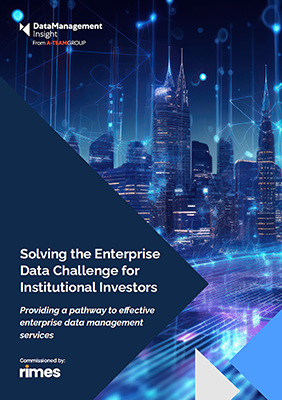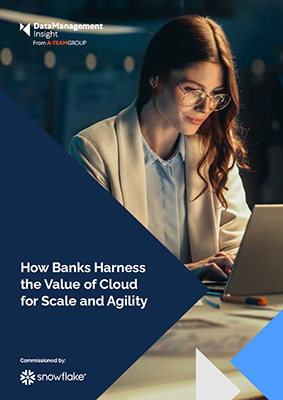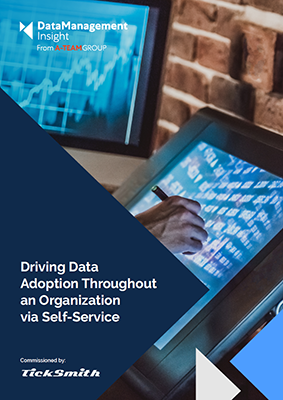Data Management Insight White Paper
The Evolution of Outsourcing Data Operations for ESG and Private Assets
Financial institutions are grappling with a substantially changed operating environment that’s placing novel pressures on their data management processes. As organisations navigate a more volatile global financial picture, many are tacking towards a multi-asset business model that demands new capabilities and expertise. They are also having to bolster their regulatory compliance capabilities, as new disclosure...
Modernizing Data and Technology for Institutional Client Services
Institutional client services providers are being expected to recalibrate their operations as their clients’ business models evolve. Higher costs, new geopolitical risks and a move towards more complex automated services has prompted their customers to seize technological opportunities that enable them to take greater control of their assets and operations. They want more agile service...
Transforming Investment Management: The Urgency to Modernize Platforms
Institutional asset managers are searching for solutions to help them navigate an investment environment that’s been reshaped by novel pressures on their business models, renewed economic uncertainty and intensifying geopolitical tensions. As they seek to address the resultant erosion of investment performance, squeezed fees and rising operating costs, they have turned to the opportunities offered...
The Evolution of Enterprise Data for ESG
Until recently, ESG data was regarded as a peripheral concern among data managers. Today, it is a vital part of an institution’s operations, needed by front- and back-office teams, putting huge new responsibilities on chief data and sustainability officers. Incorporating this new generation of data into institutions’ infrastructures, however, has been a challenge. Many on-prem...
Solving the Enterprise Data Challenge for Institutional Investors
Institutional investors are evolving under pressure from a range of emergent externalities that are prompting many to assume new roles and processes, some of which have traditionally been the preserve of asset managers. Enabled by data-led technology, they are making more direct investments and managing their portfolios in-house. At the same time, they are streamlining...
How Banks Harness the Value of Cloud for Scale and Agility
Financial services are recognizing the benefits that data-led processes can bring and are undergoing digital transformations that are putting data at the heart of their operations and decisions-making processes. They are seizing on data as an asset whose value can be unlocked through technology to increase revenue and reduce costs across the entire enterprise. With...
How to Build an Efficient Enterprise ESG Data Strategy in Banking with Cloud and Machine Learning
ESG investing is now integral to financial institutions’ activities, motivated by client demands for sustainable investment options, regulatory obligations and a growing cultural shift towards ensuring that capital is allocated in order to do better for the planet and the people on it. Data is the magic dust that is enabling the translation of that...
The Business Case for Master Data Management Transition Within Financial Institutions
Master data management ensures the creation of a “single source of truth” of information for banks and financial institutions that not only provides that the data remains intact but also makes it available and useable across the entire enterprise. Once the information foundation of golden data is established with MDM, the data can be used...
Achieving a 360-degree View of Risk with Data-Driven Insights and Strategies
Technology and data have reached a level of sophistication that is enabling financial institutions to calculate and manage the risks to which their activities and investments are exposed. Leveraging the two, however, is a challenge; if the data isn’t properly managed, the technology that identifies patterns and insights may be unable to operate optimally. One...
Driving Data Adoption Throughout an Organization via Self-Service
Financial institutions and corporations across the board are seeing value in the data sets they generate through their business activities. But harnessing this data to provide valuable insights for internal business teams can be a challenge. One approach is to adopt a self-serve data delivery model that empowers consumers and ensures they get access to...











